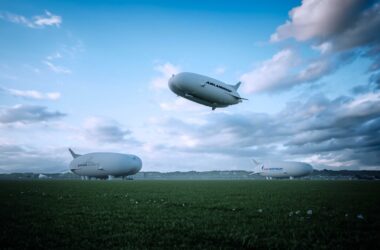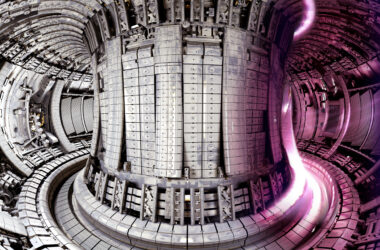In a move that promises to reshape the future of aviation, Germany’s H2FLY has successfully showcased the potential of liquid hydrogen as a sustainable fuel source.
With the world keenly watching green technology, the successful flight tests of the HY4 demonstrator aircraft powered by liquid hydrogen have set a new benchmark. The trial marks a significant step towards realising the goal of emissions-free passenger flights.
The HY4 Demonstrator Aircraft
The HY4 is the brainchild of H2FLY. At the heart of the HY4 is its hydrogen-electric fuel cell propulsion system. This system uses liquid hydrogen, converting it into electricity to propel the aircraft. Unlike traditional fuel sources, hydrogen, when used in a fuel cell, only emits water vapour, making it a clean and environmentally friendly option.

What sets the HY4 apart is its ability to store liquid hydrogen cryogenically. This storage method offers a higher energy density than gaseous hydrogen, allowing the aircraft to travel longer distances without requiring frequent refuelling.
Preliminary results suggest that the HY4, when powered by liquid hydrogen, can double its range, reaching up to 1,500 km.
The Flight Tests
The test flight occurred above Stuttgart, where the H2FLY’s HY4 demonstrator aircraft took to the air, powered solely by liquid hydrogen.
These weren’t just ordinary test flights; they demonstrated a dream long held by many in the aviation and environmental sectors. A total of four flights took place. Each flight examined the reliability and efficiency of the hydrogen-electric fuel cell propulsion system. The longest flight saw the craft soar through the skies for over three hours. This particular flight showcased the HY4’s endurance and underscored the potential of liquid hydrogen as a viable fuel source for longer journeys.
The success of these tests is a significant leap towards emissions-free passenger flights. The aviation industry is under increasing pressure to reduce its carbon emissions, and the achievements of H2FLY offer a glimpse into a future where planes could leave nothing behind but water vapour.
The team at H2FLY hope the data from these flights will be invaluable in further developing the plane. It should provide insights into the performance, efficiency, and potential areas of improvement, ensuring that the subsequent iterations of hydrogen-powered aircraft are even more advanced and efficient.
The Future of Hydrogen in Aviation
As the world grapples with the pressing need to combat climate change, the aviation sector finds itself at a crossroads. With their heavy carbon emissions, traditional fossil fuels are no longer tenable. Liquid hydrogen is a fuel source that promises sustainability and efficiency but has yet to see widespread commercial adoption.
Liquid hydrogen, or LH2, offers advantages over its gaseous counterpart. When stored cryogenically, LH2 boasts a higher energy density, allowing aircraft to carry more fuel without needing larger tanks. This translates to longer flight ranges, allowing aircraft like the HY4 to double their travel distance.
The use of LH2 also means significantly lower tank weights and volume. This weight reduction can increase aircraft range and payload, making flights more cost-effective and efficient.
Imagine transcontinental flights powered entirely by hydrogen, with zero carbon emissions. As research progresses and technology evolves, we hope to see the costs associated with hydrogen production and storage decrease, making hydrogen-powered flights an economically viable option.
Project HEAVEN and Collaborations
Behind H2FLY’s monumental achievement lies a collaborative effort across multiple organisations. Project HEAVEN, a European-government-supported consortium, stands at the forefront of this joint endeavour, aiming to demonstrate the feasibility and advantages of using the liquid, cryogenic hydrogen in aircraft.
While H2FLY leads the consortium, the contributions of its partners cannot be understated. Organisations like Air Liquide, Pipistrel Vertical Solutions, the German Aerospace Centre (DLR), EKPO Fuel Cell Technologies, and Fundación Ayesa have all played pivotal roles in bringing the vision of hydrogen-powered aviation.
Air Liquide, for instance, took part in designing, manufacturing, and integrating the liquid hydrogen tank that powered the HY4 aircraft. These organisations’ collective efforts have made the HY4’s successful flights possible and laid the groundwork for future advancements in the field.
The significance of these tests extends beyond the aviation sector. With the backing of Project HEAVEN and the collective efforts of its partners, H2FLY has shown that hydrogen-powered aviation is a reality and provided a glimpse of a world where planes soar without harming the environment.
TLDR (Too Long Didn’t Read):
- H2FLY’s HY4 demonstrator aircraft successfully conducted flight tests powered by liquid hydrogen.
- The flights mark a significant step towards emissions-free passenger air travel.
- Liquid hydrogen offers advantages like longer flight ranges and reduced tank weights.
- Collaborative efforts led by Project HEAVEN have been instrumental in this achievement.
- The success paves the way for a sustainable future in aviation, with hydrogen at its core.







